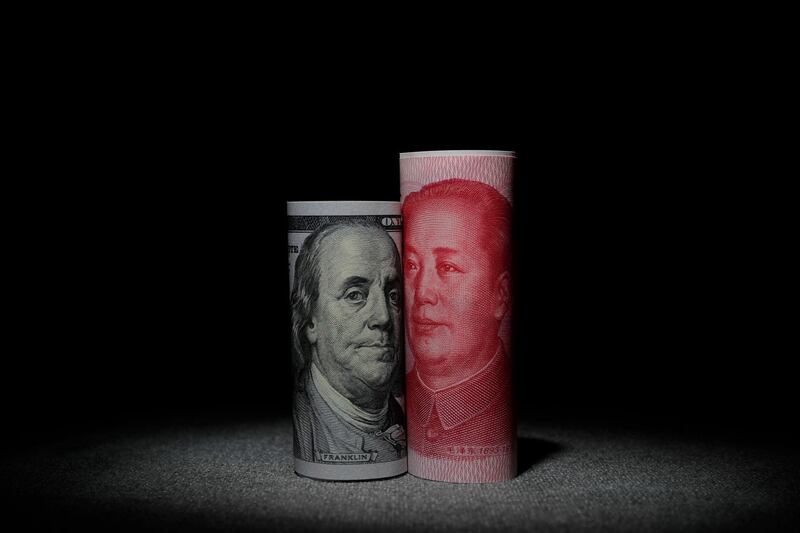Financial markets kicked off 2020 with the unwelcome geopolitical tensions between the US and Iran. Equities sold off and safe haven assets such as gold, the Japanese yen and US dollar were well bought through the initial days of the year. WTI Crude hit nine-month highs at $65.41 a barrel while gold hit $1,611 an ounce, its highest levels since April 2013.
With the situation calming down since, markets have reverted back to adopting a risk-on approach with both commodities paring their recent gains and US equities ticking higher. Along with the ongoing Iran developments, markets have been focusing on the US-China Trade War phase one deal, set to be signed Wednesday.
Developments around this suggest that the frosty relations the two economic giants share are starting to thaw. China has pledged to buy around $200 billion (Dh734bn) in US goods over the next two years. In return, China secured some tariff relief, with Washington cancelling a round of tariffs that were supposed to come into effect last month and cutting in half a 15 per cent tariff on Chinese goods worth $120bn.
Further positive developments will make markets quick to forget the Iran tensions and will be welcomed by higher yielding asset classes. We had the Dow Jones index test record highs at 29055 last week and I expect another strong test of these levels this month.
Any move beyond this will be limited, however, as the hype around the announcement of the phase one deal is largely factored into the markets. Definitely do keep an eye on developments in the Middle East as this could quickly turn sentiment and cause sharp reversals.
While I have been mostly sceptical of the bull run in US equities and calling for a larger correction since last summer, this move has still not come and thus I feel there are a few more months of record highs before the upcoming US election in November. Therefore, look at buying US indices at dips. In my opinion, a safer option these days is looking at downside opportunities in the euro-to-usd rate. Upward momentum in the euro-to-usd pair seems to run out above $1.115 and I would see this as a good level to execute sell positions with a downside target of $1.11. The euro-to-usd rate should meander in this range through January and taking advantage of this sideways range would expose good opportunities with low risk.
Overall my views on the euro have not changed — I maintain my bearish bias on the euro in the short term and the long term. The eurozone economy has been slow to recover as the patchy data through 2019 would suggest. With the European Central Bank clearly maintaining an “open-door” policy towards additional expansionary monetary policy, this will keep euro bulls in check.
Lower interest rates in the eurozone, coupled with low volatility will make the euro a highly attractive funding currency. This would naturally see traders and larger financial institutions ramp up euro-denominated loans (at cheaper lending rates) then sell these euros to buy higher-yielding assets (dollar-denominated assets, for example). This carry trade logic lends further weight for downsides in the euro heading into the summer months.
Along with keeping an eye on the US-China Trade War and Iran developments, there are some key data points to focus on through the end of January, where we can expect some intraday volatility. I am looking for an unchanged print on the Chinese GDP figure being released on Friday (quarter-on-quarter growth is expected to be unchanged at 1.5 per cent). While the euro area CPI print won’t be a big mover, the ZEW economic sentiment for both the euro area and Germany, due out on January 21, will be a good gauge on the eurozone growth theme. A weaker than expected print should see further pressure on the euro-to-usd rate and we could see a conclusive break of that stubborn $1.11 support level.
The month ends with a couple of key central bank releases: the Bank of Canada is largely expected to keep rates unchanged at 1.75 per cent on January 22, followed by the US Federal Reserve which is set to keep rates unchanged when it convenes a week later on January 29. The Bank of England rounds off the month with its announcement on January 30, expected unchanged at 7.5 per cent.
Gaurav Kashyap is a market strategist at Equiti Global Markets. The views and opinions expressed in this article are those of the author and do not reflect the views of Equiti








